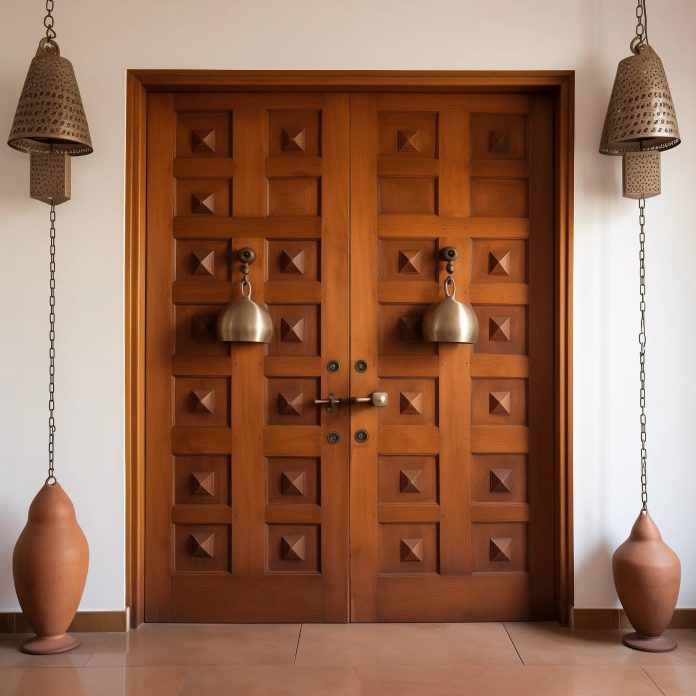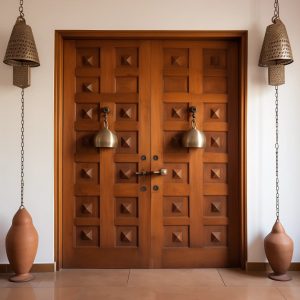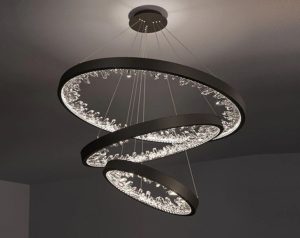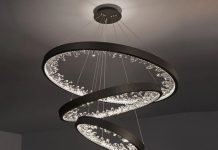We will explore some creative ideas for decorating your pooja room and designing a beautiful puja mandir that will surely enhance the ambiance of your home.
When it comes to decorating your pooja room, the possibilities are endless. From traditional to modern, there are countless ways to make your sacred space truly unique. One popular option is to opt for a wall-mounted pooja unit. Not only does this save space, but it also adds a touch of sophistication to your home.
When choosing a wall-mounted pooja unit, consider the design and size that will best fit your space. Whether you prefer a simple and sleek design or a more elaborate and ornate one, there are plenty of options to choose from. You can also customize your pooja unit with intricate carvings, colorful accents, or even personal photos and memorabilia.
When it comes to designing your puja mandir, the key is to create a sacred and harmonious space that reflects your personal beliefs and values. Whether you prefer a traditional wooden mandir or a more contemporary metal one, make sure to choose a design that resonates with you and brings you peace and tranquillity.
Puja room door design plays a central role in the aesthetic and spiritual essence of Indian homes, embodying the transition from the mundane to the sacred. Within the diverse fabric of Indian culture, the puja room stands as a sacred enclave dedicated to worship and meditation. Regardless of the diverse cultural backgrounds that enrich our community, one common element remains his. That is, traditionally, this space has served as a spiritual sanctuary where individuals can immerse themselves in prayer and meditation.
If an Indian home has a dedicated puja room, residents clean and decorate the room as a sign of faith and devotion. Puja room door design is an important part of every house
Why does a Puja room need a door?
The puja room is an essential part of every Indian home, and the door separating the puja room from the rest of the house is both a functional element and a way to express creativity and enhance the room’s aesthetic value.
You can also paint it in traditional colors such as red and orange, which are considered auspicious in Hinduism. Glass is also popular in pooja room door designs. Glass doors create a sense of transparency and lightness. You can also decorate it with intricate patterns such as Om symbols or Hindu deities to add spiritual meaning to the room.
The color of the door is also important, with traditional colors such as red, orange, and yellow considered to be auspicious. teak puja room door design Check out this teak wood puja room door design. The intricate carvings look amazing in this traditional puja room door design. The pattern goes well with bells and borders.
Aluminum is also a strong and durable material that can be used for pooja room door design. The advantage of using aluminum for pooja room doors is Durability: Materials like aluminum, steel, and fiberglass are extremely durable and can withstand harsh weather conditions, high traffic use, and regular use. It also has excellent wear resistance, so it can be used for a long time with almost no maintenance.
Thermal Efficiency:
Materials like aluminum and fiberglass are good insulators, keeping the interior of a building warm in winter and cool in summer. This significantly increases the energy efficiency of the building and reduces heating.
Flexibility: Materials like aluminum, steel, and fiberglass are very flexible and can be easily molded and molded into different designs. Therefore, it is very versatile and suitable for a variety of applications
Corrosion Resistance: Materials like aluminum, steel, and fiberglass are highly corrosion-resistant and can withstand moisture, chemicals, and other harsh elements without degrading.
Lightweight: Materials such as aluminum, steel, and fiberglass are relatively lightweight, making them easy to handle and install. This can significantly reduce the cost and time required for installation.
Exploring Pooja Room Interior Design
In the hustle and bustle of our daily lives, it’s important to have a space where we can find solace and connect with our spiritual selves. The pooja room, or prayer room, is a sacred space in many Indian homes where families come together to pray, meditate, and seek blessings. But just because it’s a place of worship doesn’t mean it can’t be aesthetically pleasing. The design of the pooja room plays a crucial role in creating a tranquil atmosphere for spiritual practice.
1. Sacred Symbols and Artwork: Incorporating sacred symbols and artwork in the pooja room can enhance the spiritual energy of the space. Whether it’s a beautiful idol of a deity, a mandala tapestry, or a sacred mantra inscribed on the wall, these elements can create a sense of reverence and devotion.
2. Lighting and Ambiance: Lighting plays a crucial role in setting the mood of the pooja room. Soft, warm lighting can create a peaceful and meditative atmosphere, while natural light can bring in positive energy. Consider using candles, Diyas, or fairy lights to add a touch of warmth and serenity to the space.
3. Materials and Textures: The choice of materials and textures can also impact the design of the pooja room. Opt for natural materials like wood, marble, or brass to create a sense of grounding and connection to the earth. Incorporating textures like silk, velvet, or jute can add a touch of luxury and elegance to the space.
4. Storage and Organization: Keeping the pooja room clutter-free and organized is essential for maintaining a peaceful environment. Invest in storage solutions like shelves, cabinets, or baskets to keep all your prayer essentials neatly arranged. Consider adding hooks or racks for hanging prayer beads, rosaries, or sacred cloths.
5. Personal Touches: Finally, don’t forget to add personal touches to the pooja room that reflects your unique spiritual journey. Whether it’s a family heirloom, a cherished memento, or a handcrafted piece of art, these personal touches can make the space feel truly special and sacred.
In conclusion, designing a pooja room is not just about aesthetics; it’s about creating a sacred space that nurtures your spiritual practice and uplifts your soul. By incorporating sacred symbols, lighting, materials, organization, and personal touches, you can create a pooja room that is both visually stunning and spiritually fulfilling. So go ahead, unleash your creativity, and design a pooja room that speaks to your heart and soul. Step into the sacred space and let the divine energy flow through you.
Latest Blogs
- Best Interior Designs for duplex house with color combination and space
- Best Doors and Interior Designs for Pooja Room
- Best Hanging Lights For Home Interior And Office























